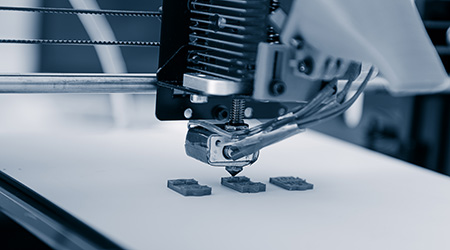A new study finds continued strong adoption of 3D printing, with 77 percent of respondents saying they made 3D printing investments in 2021 and 69 percent expecting to do so this year. The survey by MakerBot compiled the results from its survey on 3D printing usage habits and investment plans of nearly 1,200 professionals from around the world
In this year’s study, 84 percent of respondents who invested in 3D printing last year said they plan to purchase more equipment, materials and accessories in 2022 in order to address new applications, whether that’s prototyping, tooling or even expanding to mass production — something new for respondents.
“In the midst of tremendous disruption around the world, professionals in design, engineering and manufacturing see 3D printing as the way forward,” says Nadav Goshen, CEO of MakerBot. “The results from our report show an eagerness to increase both use and spend as 3D printing demonstrates its ability to accelerate product development and transform businesses.”
Additional insights from the report:
- Among the benefits respondents are experiencing, in addition to improving design and prototyping processes, respondents cite improving their research and development projects (57 percent) and reducing dependence on external suppliers (35 percent).
- For the first time, some respondents are tying investments to enabling large scale 3D manufacturing (8 percent).
- 3D printing is continuing to expand outside of functional prototypes and concept modeling. Its use for research and development (78 percent) is the primary application among healthcare respondents, while research and development is listed as one of the top three applications for respondents in consumer products.
- Respondents want to see continued improvements in the technology. Better print quality (83 percent), faster printing speeds (65 percent), and larger build volumes (52 percent) were among the top features that will need refinement.
- Respondents also would like the 3D printing industry to evolve in the next three-five years to meet the changing demands of its users, with many eager to see 3D printing start to play a bigger role in the supply chain (44 percent), as well as be used to localize manufacturing (32 percent). About 33 percent of respondents would also like better practices in the industry to help reduce 3D printing waste.
- Interest in the sustainability of 3D printing is growing. For instance, 22 percent of respondents use 3D printing to help them reduce manufacturing waste, while 38 percent expect improvements in sustainability and recyclability efforts in the next three-five years.

 UF Health Hospitals Rely on Green Globes to Realize Their Full Potential
UF Health Hospitals Rely on Green Globes to Realize Their Full Potential How Healthcare Facilities Can Be Truly Disaster-Resilient
How Healthcare Facilities Can Be Truly Disaster-Resilient TriasMD Breaks Ground on DISC Surgery Center for San Fernando Valley
TriasMD Breaks Ground on DISC Surgery Center for San Fernando Valley Bigfork Valley Hospital Falls Victim to Data Breach
Bigfork Valley Hospital Falls Victim to Data Breach AI-Driven Facilities: Strategic Planning and Cost Management
AI-Driven Facilities: Strategic Planning and Cost Management